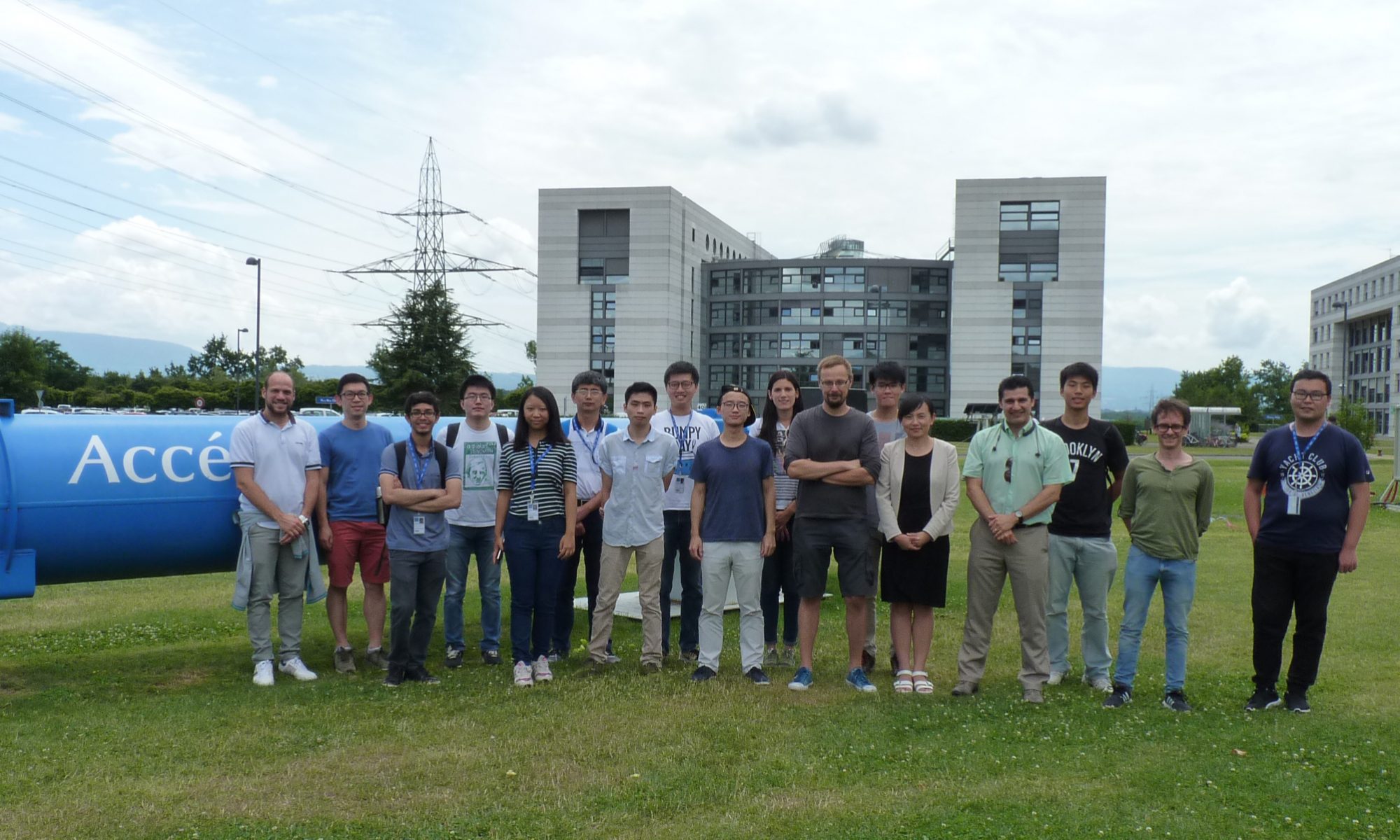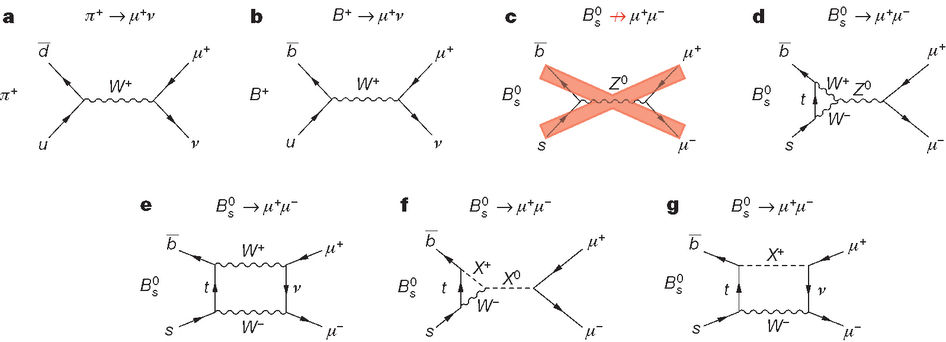On 13 May 2015, a very rare particle decay event was announced to be observed, which will give physicist important guidance on search for new physics theories.
Discovery Process
Actually, this rare decay is not totally new to physicists — it has been expected by physicists, according to the theory of Standard Model of particles. However, this event is extremely rare, which forbids us from detecting this event before the powerful particle collider LHC started operating. Why is it so difficult? We can easily understand it from the following diagram.
Too complicated? That’s Good! The Standard Model tells us that the more complicated a process looks like, the more rare it is. More precisely, each additional vertex in the diagram surpress the branching fraction of the event. The diagram, reading from the left to right, means: the unstable particle B0sBs0 decays to 2 particles μ+,μ−μ+,μ−. For every B0sBs0, there is 4×10−94×10−9 probability it decays in to this mode, even less than lightning strike probabilities. The experimental result is compatible with the above number.
This discovery is made possible by the operation of LHC, in which two particle detectors, CMS and LHCb, search for this event independently. Originally, their results were not conclusive enough to be declared as “discovery”, but finally their combined analysis confirm the decay event with strong confidenence.
Signinficance of the Discovery
The ability to observe a rare decay event is very impotant to physicists. Most importantly, it is the key to verify the Standard Model or extend it with new not-yet-knownthoeries.
Certainly, the Standard Model has flaws:
- There is no place for dark matter in the model
- It cannot explain why matter is more than antimatter around us
That’s why people are actively searching for ways to explain the above facts, and the new decay discovered may help us!
The underlying reason for the importance of the new decay is its high sensitifity to the theories related to the Standard Model. If we would like to look for flaws of the theory, the decay is what we should investigate in. Any deviation of the properties of the decay from our theory will point physicist the direction where we may find new extension to the Standard Model.
The future runs of LHC, with higher energy, will improve the precision of the measurement, and may pave us the road for new physics.

